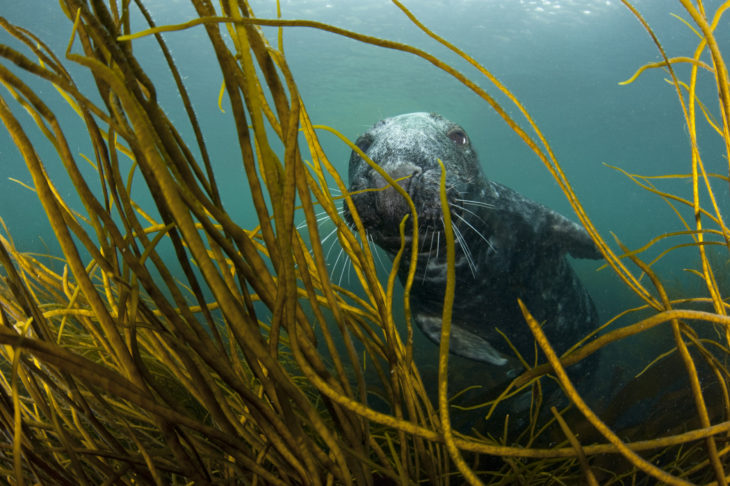Large-scale seaweed removal is at odds with marine conservation
Over the last few years there has been a growing interest in large-scale, commercial seaweed harvesting, in particular the kelp species Laminaria hyperborea.
In 2016, Marine Scotland opened a public consultation asking for views on ‘Wild Seaweed Harvesting’ (the Trust’s response can be found here), and recently Marine Biopolymers Ltd submitted a scoping report for harvesting L. hyperborea from Scotland’s west coast.

The Trust is concerned that the large-scale harvesting of seaweed in Scottish waters will have a detrimental impact on the diverse and important ecosystems they support and we remain unconvinced that this activity can take place sustainably.
There is a clear lack of data and understanding of the knock-on effects of seaweed harvesting on marine ecosystems and, without clear evidence to demonstrate the practice is ecologically sustainable and impacts can be adequately mitigated, it should not be permitted.
Scotland has an expansive marine environment that hosts a wide range of marine habitats that support diverse and highly productive ecosystems. Of these valuable habitats, kelp beds are considered one of the most productive – their presence creates a complex habitat with areas shaded under canopies, vertical stem structures (stipes), and large waving leaf-like blades that provide homes, protection, food, and nursery grounds for many species, such as lobster, crabs, seabirds, and seals.
Scotland’s seas hold a significant proportion of the UK’s kelp habitat. Kelp is, therefore, considered to be of national importance and is identified as a Priority Marine Feature. The abundance of seaweed in Scottish waters has also drawn the attention of companies that use seaweed for commercial products, such as food, ingredients for cosmetics, and agar jelly (used in laboratories). At present, seaweed harvesting happens on a small scale, usually by hand, and with little environmental impact.
Marine Biopolymers Ltd proposal is to harvest kelp by trawling large ‘rakes’ through the kelp beds and pulling out the larger, adult plants (the entire plant: holdfast, stem, and blades), leaving only juveniles and bare rock. This approach would completely change the characteristic of the seafloor and leave the area exposed to other species of seaweed moving in. Marine Biopolymers Ltd expect the kelp habitat to fully recover within 4-5 years but have failed to consider the recovery rates of all the other species that were present before the kelp was removed.
Kelp beds are generally found in areas with fast currents and high wave exposure, and their presence in these high energy environments can act as a buffer, offering protection to Scotland’s coastlines. If kelp is removed, or its density is reduced, the hydrodynamic system will be altered. This could lead to increased coastal erosion.
Kelp is an important and protected feature in Scottish waters and we should be working towards conserving, and ideally enhancing, what we have to ensure healthy, living seas. The practice of large-scale harvesting by mechanical trawling is completely at odds with this objective.
Dr Sam Collin, Marine Planning Officer
The Scottish Wildlife Trust and other members of Scottish Environment LINK have expressed these concerns in a joint response to Marine Biopolymers Ltd’s scoping report (pdf).
Help protect Scotland’s wildlife
Our work to save Scotland’s wildlife is made possible thanks to the generosity of our members and supporters.
Join today from just £3 a month to help protect the species you love.
Preface
Over the last few years there has been a growing interest in large-scale, commercial seaweed harvesting, in particular the kelp species Laminaria hyperborea. In 2016, Marine Scotland opened a public …
